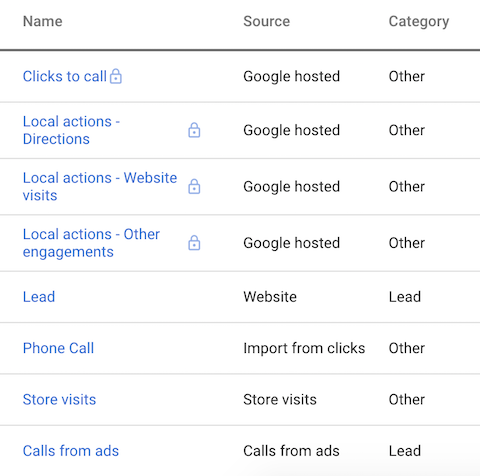Dear Reader,
Welcome to the wondrous world of PPC advertising, where digital marketers play the game of persuading potential customers to click on paid ads, and ultimately ‘convert’ in some meaningful way.
Conversions come in many different shapes and sizes. A conversion could be something as simple as a customer signing up for your newsletter, a free trial of your product or submitting a lead form. On the opposite end of the conversion spectrum, we’ll find conversions that are defined as purchases of extremely expensive products and services, costing upwards of $100K.

These conversions, regardless of where they fall on the spectrum, most often occur on a website. How does the potential customer get to the website?
The obvious answer to that rhetorical question is a click. For those unaware, you pay for each ad click that takes a potential customer to your site, regardless of what they do once on your site. Knowing that, you may then assume that a high click-through-rate would translate to a high number of conversions, right?
The short answer to that is NO. Though the two are correlated, a high CTR (or really any CTR, for that matter) does not have a causal relationship with conversion rates and total conversions. As we all learned in high school science, a correlation between two variables doesn’t imply causation.
The Problem
Regardless of the CTR, you never really want to find yourself in a situation where traffic is being driven to your site, only to bounce off the page/not convert. At that point, you’re paying for the traffic to your site and have little to show for it.
Of course, it isn’t reasonable to expect for everyone that clicks on your ad to convert, but the conversion rate should be at a point where you at least have a positive return on ad spend. Too often I see people focusing on the CTR, which is hardly more than a vanity metric. You may have a high CTR, but if you can’t convert those clicks then you’re simply throwing money out the window. One of the last things you want is a high CTR, with little to no conversions to show for it.
Where’s The Disconnect?
Ad Copy and Landing Page Parity
You, dear reader, might now be wondering, “if users click my ad, they must have some level of interest in the products/services listed on the website, right?” For the most part, you would be right. Your next question should be, “is my ad copy tightly aligned with what the customer is going to see upon arriving on the landing page?” If the answer to that question is anything other than ‘yes’, you have a problem. As an aside, you should have some unbiased parties answer that question for you as well, as they likely don’t have the same blinders on as you and can give a much less biased answer.
As an example, let’s pretend that you’re running a digital marketing education business, and you have dedicated sections for each niche, promising to teach them the basics of a certain niche within 10 days. A potential customer might search, “teach me PPC advertising”, and may see your ad first, which reads, “Learn how to PPC good in 10 days” (you promised to teach them digital marketing, not grammar, remember). If the landing page they’re taken to for that ad isn’t for the specific niche they searched for, you’ve already failed at matching your landing page to the customer’s expectations. The mismanagement of their expectations could be one reason why you have a high CTR, yet low conversion rates/conversion volume.
A potential solution to this issue would be ensuring that your “Learn to PPC good in 10 days” ad takes the customer to a landing page for the PPC section you teach. Additionally, the landing page should have a solid call-to-action, related to how you want the customer to convert.
Too Much, Too Soon?
Another disconnect may come from the types of products/services you sell and how long a typical buyer stays in the consideration phase. If, for example, you sell an innovative new software that can solve all sorts of unsolved problems, yet costs three times the current software they use, the potential customer is more than likely not ready to buy after only the first click. The customer may simply be lacking the confidence to pull the trigger and buy, opting to come back later. If you promise something almost too good to be true in the ad copy and then ask the customer to buy right then and there, without educating them at all, you’ll likely scare them away. At least for the time being.
You could sell a new piece of software that solves problems no other software can solve, but it will still take time for the potential buyer to build up enough knowledge and trust (provided you give them the resources to do so) to buy the software from you.
You need to ask yourself, “are we asking them to commit too much, too early?” Think of it like dating: you would never ask Mr/Ms Right to marry you on the first date, right? No matter how certain you are that he/she is the one, you’re going to go on more than one date before popping the question. Similarly, don’t ask new customers to commit and buy after only the first touch point. Nurture them. Give them the resources they need to make an educated buying decision. Ask them to convert in different, ‘softer’ ways, like downloading a whitepaper that educates them on how truly unique your product is. Then, add them to your remarketing lists and target them with ad copy specific to whichever part of the buying cycle they’re currently in. Nurture them, but don’t suffocate them, and ask yourself, “How can I target those with a realistic intent to purchase?”
Conclusion
To restate the former, remember that high CTRs don’t necessarily mean that you’ll have high conversion rates or a high amount of conversions. Similarly, an increase in CTRs don’t signal that things are improving for the account.
You need to ensure that the ad copy you have matches what the customer might expect to see on the landing page. If not, they’ll more than likely bounce off your page, costing you however much that click cost.
Additionally, while it’s OK (and encouraged here) to lead with an ask, you need to think about whether or not that ask is too strong. If it is, you may scare the potential buyer away before they’ve had a chance to be educated about why your product/service is superior to all others.
Ask yourself today, “How can I target those with a realistic intent to purchase?”



